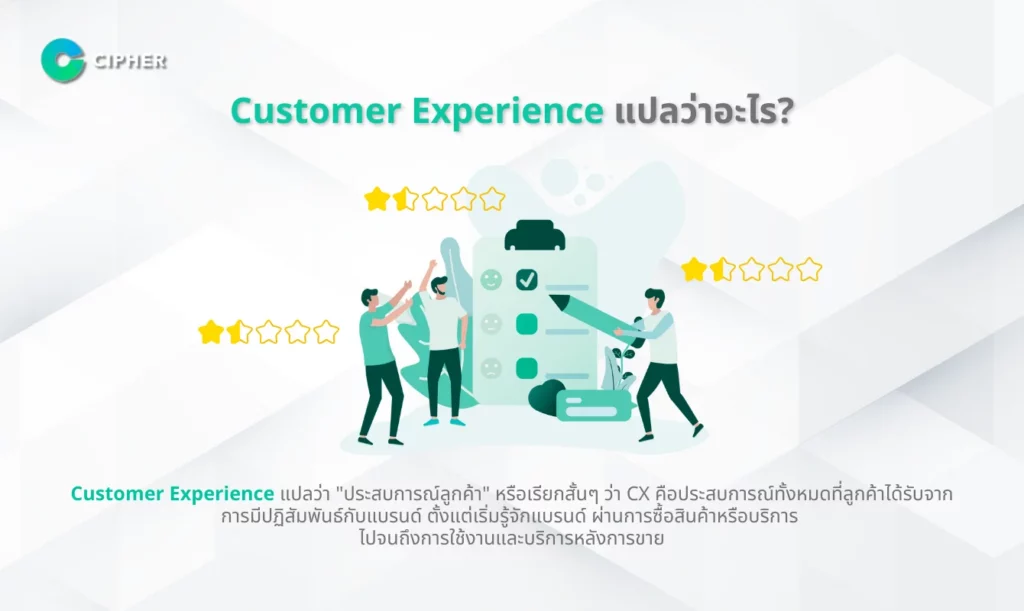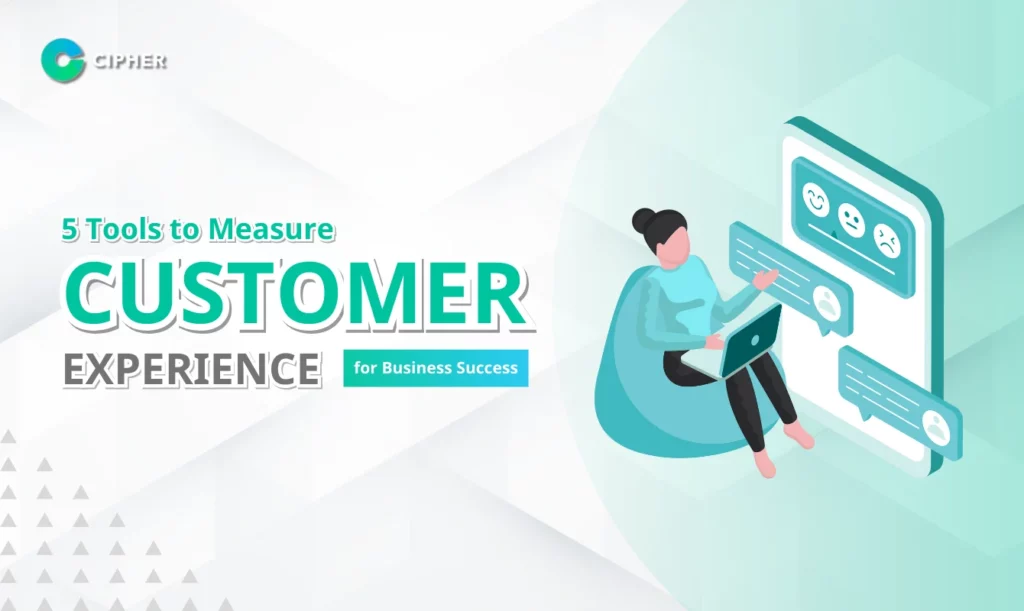Table of Contents
In today’s increasingly competitive business landscape, brands must develop new strategies to differentiate themselves and capture customers’ hearts and minds. One of the most critical strategies is focusing on creating excellent “Customer Experience” (CX). Having fresh ideas for customer satisfaction is essential, but how can businesses know if their CX initiatives are effective? The answer lies in using these 5 tools to measure customer experience that will not only help you understand your customers better but also drive meaningful business growth through data-driven insights.
What is Customer Experience, and Why is Measuring Customer Experience Important?

Customer Experience, or CX for short, encompasses all interactions customers have with your brand from initial awareness through purchase and post-purchase service. This experience includes everything from first impressions when seeing advertisements, visiting websites, interacting with staff, trying products, making payments, to post-purchase usage. Every touchpoint a customer has with your business contributes to their overall experience. Managing and measuring customer experience effectively is a crucial component of your marketing mix that businesses should prioritize to stay competitive.
Collecting customer feedback is key to improving CX because it helps you understand customers’ true feelings and needs. The importance of Customer Experience includes several benefits:
- Increased sales: Customers who have positive experiences are more likely to make repeat purchases and buy in larger quantities
- Brand loyalty: Good experiences transform customers into brand lovers with long-term loyalty
- Word-of-mouth marketing: Impressed customers recommend your brand to others, creating organic growth
- Differentiation: In markets where products and services are similar, superior customer experience helps distinguish your brand
Creating excellent customer experiences can also enhance CRM system effectiveness and business benefits by providing quality customer data that can be used to develop products and services that better meet customer needs.
5 Critical Touchpoints to Strengthen for Better Customer Experience
Customer insight is a deep understanding of customer needs, expectations, and behaviors derived from analyzing customer data and feedback. Understanding customer insights helps you design effective touchpoints.
Before discussing measurement tools, let’s understand the key touchpoints that impact customer experience to determine what we should measure:
- Website/Search: Websites are critical touchpoints because when customers need information, they typically visit websites for additional details about products and services. User-friendly website design, up-to-date information, and effective SEO to help customers easily find your brand are crucial. Choosing the right enterprise CMS for your organization can significantly impact this touchpoint.
- Email Newsletters: Email is an excellent channel for communicating with customers, increasing awareness, stimulating sales, building a loyal customer base, and maintaining relationships effectively. Sending news, promotions, and valuable content via email, while measuring which content customers prefer, helps make email marketing more efficient.
- Customer Service: Good customer service creates differentiation between your business and competitors. Quick and efficient responses to customer questions or problems increase satisfaction and brand loyalty. Systems that consolidate information from all channels, such as Choco FastHelp, can speed up customer responses and prevent missed questions.
- Social Media: Social media is an important channel for connecting with customers, building awareness, sharing content, and answering questions quickly. It’s also a channel for advertising campaigns and effectively measuring success. Using appropriate Social Media Marketing and Social Media Management services can greatly enhance the effectiveness of this touchpoint.
- Maps/GPS: Maps and GPS help customers find your business more easily, especially when customers search for nearby stores or type “near me.” Updating information about location, contact numbers, operating hours, and having good reviews can effectively attract new customers.
5 Tools to Measure Customer Experience Every Business Should Use

1. Net Promoter Score (NPS)
NPS measures customer satisfaction with a brand or product, developed by Fred Reichheld, an American businessman and thinker. This tool measures long-term loyalty and overall relationship customers have with a brand.
Measurement method: Ask customers a simple question: “How likely are you to recommend this product or service to friends or family?” with a score from 0-10, then divide customers into 3 groups:
- Promoters (score 9-10): Loyal customers willing to recommend to others
- Passives (score 7-8): Customers with moderate satisfaction but not high loyalty
- Detractors (score 0-6): Dissatisfied customers who may damage brand reputation
NPS is calculated by subtracting the percentage of Detractors from the percentage of Promoters.
Implementation methods:
- Create feedback pop-ups on websites
- Send surveys via email after service
- Call directly for feedback
2. Customer Effort Score (CES)
CES measures how much effort customers need to interact with your company or perform activities such as requesting help, purchasing products, or solving problems. The goal is to assess how easy or difficult customers find procedures or processes.
Measurement method: Use surveys after customer interactions, asking questions like “How easy did our company make it to solve your problem?” with ratings from “very easy” to “very difficult.”
Since ease of service use affects customer satisfaction and loyalty, CES is an important indicator for businesses looking to improve service processes.
3. Customer Satisfaction (CSAT)
CSAT measures customer satisfaction with products, services, or experiences. CSAT is the most frequently used indicator for evaluating customer feelings after any activity such as purchasing products, using services, or receiving support from customer relations teams.
Measurement method: Use straightforward surveys with questions like “How satisfied are you with our product/service?” rated on a scale, such as 1 to 5 or 1 to 10, with the highest score indicating maximum satisfaction.
CSAT is excellent for measuring short-term satisfaction and reactions to specific interactions, allowing businesses to identify issues and resolve them quickly.
4. Customer Retention Rate (CRR)
Customer Retention Rate measures how well a business retains existing customers over a period.
Calculation method: CRR = ((Number of customers at end of period – Number of new customers during that period) / Number of customers at beginning of period) × 100
CRR is a critical indicator because retaining existing customers typically costs less than acquiring new ones. A low customer retention rate may indicate that the brand is unable to create sufficient satisfaction or maintain good relationships with customers.
5. Customer Lifetime Value (CLV)
Customer Lifetime Value (CLV) calculates the long-term value customers can generate for a business, based on average customer spending throughout their relationship with the brand.
Importance of CLV:
- Helps businesses understand the long-term value of each customer
- Assists in calculating costs for attracting new customers
- Helps plan marketing strategies and budget allocation
CLV is a crucial indicator for businesses seeking sustainable growth because it provides an overview of the value in investing to maintain and develop customer relationships.
Technology Platforms that Enhance Measuring Customer Experience
1. Website Analytics
2. Google Analytics
Google Analytics is a widely used tool for website data analysis, helping businesses to:
- Track website visit behavior
- Analyze user sources
- Check conversion capabilities
- Analyze website performance and improve UX/UI
3. VWO (Visual Website Optimizer)
VWO is a tool for A/B testing and optimizing website conversions, helping businesses:
- Test different designs or content to see which generates better conversions
- Experiment with new approaches to make customer experiences smoother
- Increase conversion rates and sales
4. Contentsquare
Contentsquare is a user experience analysis tool focused on tracking in-depth website behavior, helping businesses:
- Analyze clicks, scrolling, and other interactions
- Study how different website elements affect user experience
- Identify where customers stop clicking or encounter problems
- Make detailed UX improvements
5. Appsflyer
Appsflyer focuses on mobile application analysis, helping businesses:
- Track app user behavior
- Analyze user sources
- Monitor advertising campaign performance
- Measure mobile marketing results
6. Social Media Listening Tools
Social media monitoring and analysis tools help businesses:
- Track brand mentions on social media
- Analyze customer sentiment toward the brand
- Identify trends and issues customers are interested in
- Improve marketing and communication strategies
Modern Technologies that Enhance Customer Experience
1. AI and Chatbots
AI and chatbots can help customers receive immediate responses 24 hours a day by:
- Quickly answering basic questions
- Recommending products that suit customer needs
- Collecting data to analyze customer requirements
- Transferring information to staff when necessary
An example of a brand effectively using AI is Sephora, which uses chatbots to recommend beauty products that match individual needs, increasing sales and creating customer satisfaction.
2. Metaverse
The Metaverse or virtual world is changing how brands interact with customers by:
- Creating virtual experiences where customers can interact with brands
- Offering opportunities for customers to try digital products before actual purchase
- Building online communities that connect customers
A successful brand example is Nike, which launched Nikeland on Roblox, a virtual space where customers can participate in various activities and create avatar characters with Nike products.
Services from Cipher to Elevate Customer Experience
As a comprehensive Digital Marketing agency, Cipher offers services that help elevate your business’s customer experience:
- Customer Journey Analysis: We help you analyze the customer journey from brand awareness to repeat purchases to identify strengths and areas for improvement.
- CRM System Development and CX Measurement: We provide consultation and help establish CRM systems appropriate for your business, along with planning Customer Experience measurement using effective tools.
- Create and Develop Touchpoints: We help design and develop the 5 touchpoints mentioned above to ensure customers receive the best experience at every step.
- Omnichannel Marketing: We help your business connect all communication and sales channels to create a seamless experience for customers.
- Data Analysis and AI: We use the latest technology to analyze customer data and develop AI systems that help you better understand and respond to customer needs.
Conclusion
Implementing these 5 tools to measure customer experience (NPS, CES, CSAT, CRR, and CLV) helps businesses gain deeper insights into customer needs and create significant competitive advantages. Effective measurement of customer satisfaction, when combined with behavioral analysis technology and modern solutions like AI and Chatbots, further enhances your ability to create remarkable experiences that drive loyalty and growth. Cipher is ready to help your business develop comprehensive systems for measuring customer experience with our Digital Marketing expertise, ensuring sustainable growth in today’s competitive digital landscape.





